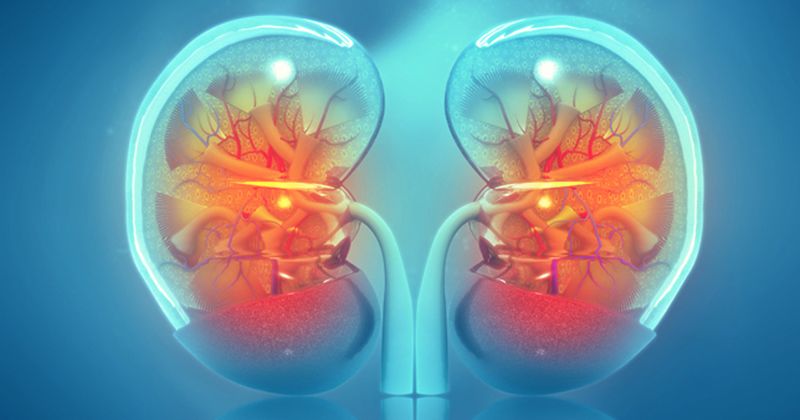'Consequence and cause': Amyloidosis in the rheumatic diseases
The spectrum of conditions under the amyloidosis umbrella can present in myriad ways in patients with rheumatic diseases, with several possible complications, according to data from the 2021 Congress of Clinical Rheumatology-East.
“Amyloid can be both a consequence and a cause of rheumatic disease,” Peter D. Gorevic, MD, professor of medicine & rheumatology at the Icahn School of Medicine at Mount Sinai Hospital, said in his presentation.

At the moment, some 38 types of amyloidosis have been observed or described, according to Gorevic. “What they have in common is that normal proteins undergo change,” he said. “In amyloid diseases, they go off the path and start to form aggregates.”
The disease is marked by fibrils that are made in the nucleus and may cause apoptosis or cytotoxicity. They typically have 100-150A fibrils as assessed by electromicroscopy. In addition, metachromasia may be a characteristic, along with Congo red birefringence and thioflavin T yellow-green fluorescence.
Amyloidosis is generally divided by localized or systemic disease. Gorevic stressed that systemic manifestations “are the ones that rheumatologists need to know about” because they can impact any organ system in the body. “A lot of these patients will present with renal involvement,” he said, but noted that cardiac outcomes, carpal tunnel syndrome, pinched purpura or an enlarged tongue all may be observed.
At the top of Gorevic’s list was transthyretin (ATTR) amyloidosis, which he said has two types. “One is a mutant molecule with single nucleotide substitution,” he said. “The other is wild type.”
Neuropathy in ATTR amyloidosis can present as carpal tunnel syndrome or motor neuropathy, according to Gorevic. In addition, vitreous amyloids can occur in the backs of a patient’s eyes. “There can be some 120 mutations of the structure of this protein,” he said.
ATTR mutations most frequently occur in Black individuals, according to Gorevic. “They are frequently implicated in cardiac involvement,” he said.
AA is another type of amyloidosis that should be on the radar of rheumatologists. AA is a high-density lipoprotein that is made in the liver. “It is a major acute phase reactant,” Gorevic said. “All of our proinflammatory cytokines can make it go up, so we frequently see a relationship between this type of amyloidosis and inflammation.”
Elevated interleukin-6 can cause AA amyloidosis, according to Gorevic. He added that it frequently presents as kidney disease, but it also can have vascular, gastrointestinal or thyroid involvement.
“The mean survival of this disease is 2 to 10 years,” Gorevic said. “They go on dialysis because of renal insufficiency, but they do not do well on dialysis because of other organ system involvement.”
As a result, these patients frequently end up being candidates for transplantation.
Another type of amyloidosis is familial Mediterranean fever (FMF), which Gorevic noted can have a number of phenotypes. “Some can be quite severe and some can be quite difficult to treat,” he said. IL-1 inhibition can have efficacy for these patients, along with IL-6 inhibition.
“FMF fevers are the most common cause of AA amyloidosis,” he said. “These mutations are incredibly common.”
A general approach to treating amyloidosis is to “shut off the things that trigger it,” according to Gorevic. However, anti-cytokine therapies such as IL-1a, IL-6 and TNF inhibitors have been used with varying degrees of success.
Tetramer stabilizers, which can inhibit the amyloidogenic process, also have been used, according to Gorevic. “But we are looking for alternative tetramer stabilizers to get into the eye or the heart, depending on the involvement in the patient,” he said.
On the frontier is gene therapy to simply remove the pathogenic mutation that is causing the amyloid disease. However, that approach is currently in the proof-of-concept phase. “It is really kind of interesting because it will be the future,” Gorevic said.
In the meantime, Gorevic stressed that because amyloid diseases are so complicated, it may take multiple interventions to control them in any given patient. “The final answer is not going to be one thing, it is going to be combination therapy,” he said.

